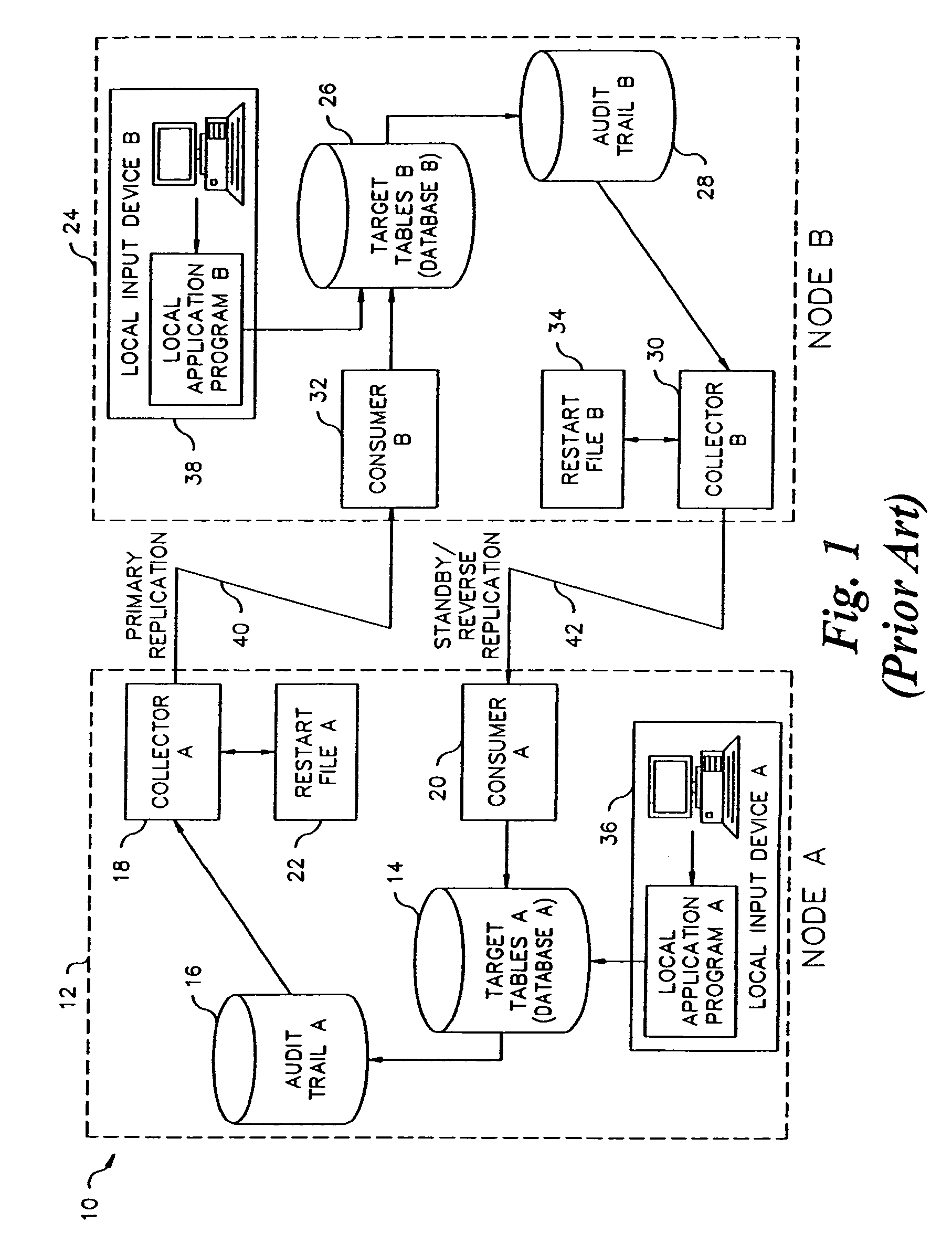Synchronization of a target database with a source database during database replication
a database and source database technology, applied in the field of database replication, can solve the problems of reducing the efficiency of the operation, affecting the performance of the database,
- Summary
- Abstract
- Description
- Claims
- Application Information
AI Technical Summary
Benefits of technology
Problems solved by technology
Method used
Image
Examples
first embodiment
[0069]In the present invention, a marker is assigned to a block of data, the marker is sent to other nodes via the normal replication system, and the data is sent to the other nodes without going through the normal replication system.
[0070]More specifically, the first embodiment provides a scheme for synchronizing plural databases in a database replication system including a plurality of nodes connected via communication media in a topology. Each node includes a database, an audit trail of all transactions posted to the database, and a transaction transmitter which sends selected transactions in the audit trail to one or more other nodes. In the broadest sense, the scheme operates as follows:
[0071]1. A block of data is read from a source database at the first node. The block of data has a predetermined byte size, and as many rows of data as can fit within the predetermined byte size are read from the source database. A dynamic throttling scheme may be used to dynamically change the ...
second embodiment
[0091]In the present invention, resynchronization is performed by using a marker and an indicia of the contents of the data. This scheme reduces the amount of data that must be transmitted from the first node to the second node, thereby reducing processing time and bandwidth requirements.
[0092]More specifically, this scheme synchronizes plural databases in a database replication system including a plurality of nodes connected via communication media in a topology. Each node includes a database, an audit trail of all transactions posted to the database, and a transaction transmitter which sends selected transactions in the audit trail to one or more other nodes. In the broadest sense, the scheme operates as follows:
[0093]1. At least one row of data is read from a source database at the first node. The row of data may be a block of data having a specified key range.
[0094]2. A marker is assigned to the at least one row of data.
[0095]3. The marker is written to the audit trail at the fi...
third embodiment
[0108]In the present invention, a key range is used to determine when to post normal replication data to the target database. This process may be used during synchronization or resynchronization of the target database.
[0109]More specifically, the third embodiment provides a scheme for synchronizing a target database with a source database in a database replication system wherein the source database is on-line during the synchronization. (The target database may be on-line or offline.) Since the source database is on-line during the synchronization, the target database receives replication data during the synchronization. The source database is located at a first node of the system, and the target database is located at a second node of the system. In the broadest sense, the scheme operates as follows:
[0110]1. Successive blocks of data are sent from the first node to the target database. Each block of data has a key range, and each block of data includes one or more rows of data.
[011...
PUM
 Login to View More
Login to View More Abstract
Description
Claims
Application Information
 Login to View More
Login to View More - R&D
- Intellectual Property
- Life Sciences
- Materials
- Tech Scout
- Unparalleled Data Quality
- Higher Quality Content
- 60% Fewer Hallucinations
Browse by: Latest US Patents, China's latest patents, Technical Efficacy Thesaurus, Application Domain, Technology Topic, Popular Technical Reports.
© 2025 PatSnap. All rights reserved.Legal|Privacy policy|Modern Slavery Act Transparency Statement|Sitemap|About US| Contact US: help@patsnap.com



